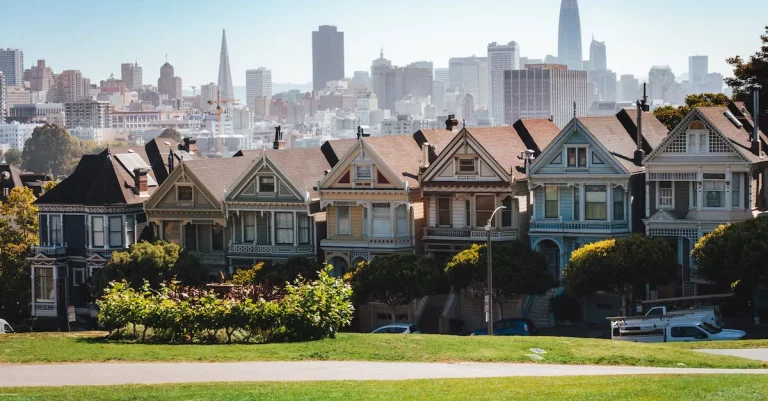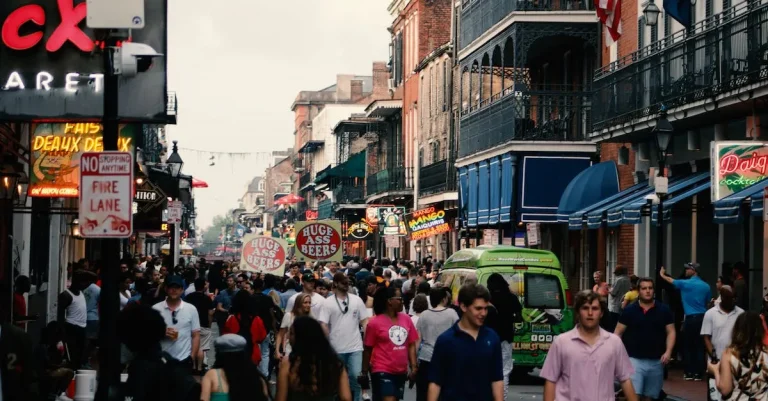Reasons Not To Live In St. Augustine, Florida
With its rich history, charming architecture, and beautiful beaches, St. Augustine is a popular tourist destination and retirement spot in northeast Florida. However, despite its appeal, living in the nation’s oldest city does come with some downsides. If you’re considering a move to St. Augustine, it’s important to weigh both the pros and cons.
If you’re short on time, here are some quick reasons not to live in St. Augustine: frequent hurricanes, lack of job opportunities, expensive housing, crowds and traffic, strict historic preservation laws.
Hurricane Risk
Living in St. Augustine, Florida comes with its fair share of perks, but it’s important to consider the potential risks as well. One of the major concerns for residents is the hurricane risk that comes with living on Florida’s vulnerable Atlantic Coast.
Located on Florida’s Vulnerable Atlantic Coast
St. Augustine is situated on Florida’s east coast, making it susceptible to the impacts of hurricanes that form in the Atlantic Ocean. The city’s location puts it in the direct path of these powerful storms, increasing the likelihood of experiencing their destructive forces.
Frequent Hurricane Strikes and Storm Surge
St. Augustine has a history of experiencing frequent hurricane strikes. The city has been affected by notable hurricanes in the past, including Hurricane Matthew in 2016 and Hurricane Irma in 2017. These storms brought strong winds, heavy rainfall, and storm surge, causing significant damage to homes and infrastructure in the area.
Storm surge is a particularly concerning aspect of hurricanes for St. Augustine residents. It refers to the abnormal rise in seawater levels during a storm, which can result in flooding and erosion of coastal areas.
The combination of high winds and storm surge can pose a serious threat to the safety and well-being of residents.
Costly Home Damage and Insurance
Hurricanes can cause extensive damage to homes, leading to costly repairs and renovations. The strong winds and flying debris can result in roof damage, broken windows, and structural issues. The flooding associated with storm surge can also lead to water damage and mold growth.
Moreover, living in an area with a high hurricane risk can impact home insurance premiums. Insurance companies may charge higher rates to cover the increased likelihood of property damage caused by hurricanes.
It’s important for homeowners in St. Augustine to carefully consider the financial implications of living in a hurricane-prone region.
For more information on hurricane preparedness and safety measures, you can visit the Ready.gov website, which provides valuable resources and tips for individuals living in hurricane-prone areas.
Limited Economy and Job Market
Living in St. Augustine, Florida may not be the best choice for those seeking a diverse and thriving economy. The city’s economy heavily relies on tourism, which can be both a blessing and a curse. While the tourism industry brings in revenue and supports local businesses, it also creates a limited job market with a lack of diversity.
Tourism-Based Economy Lacks Diversity
St. Augustine’s economy is primarily driven by its tourism industry, which means that many businesses in the area cater to the needs of tourists. While this can be great for those seeking employment in the hospitality and service industries, it also means that job opportunities outside of these sectors may be limited.
Those looking for jobs in fields such as finance, technology, or manufacturing may find it challenging to secure employment in St. Augustine.
According to the Bureau of Labor Statistics, the leisure and hospitality sector accounted for a significant portion of the employment in St. Johns County, where St. Augustine is located. This heavy reliance on tourism leaves the city vulnerable to fluctuations in the travel industry, and job stability may be a concern for residents.
Low Wages Common in Service Industry Jobs
Another factor to consider when evaluating the job market in St. Augustine is the relatively low wages in the service industry. While the cost of living may be lower compared to some other cities, it is important to note that wages in the area may not be as competitive.
Service industry jobs, such as those in hotels, restaurants, and retail, often offer lower wages compared to other industries.
According to the U.S. Department of Labor, the average hourly wage for leisure and hospitality workers in St. Johns County is below the national average. This can make it challenging for individuals to make a comfortable living and may impact their overall quality of life.
Lack of Major Employers Compared to Other Cities
Compared to larger cities, St. Augustine lacks major employers and corporate headquarters. This can limit job opportunities for those seeking positions with established companies. While there are still job opportunities available in the area, individuals may have to be more creative and flexible in their job search.
It is worth noting that St. Augustine is home to Flagler College, a private liberal arts college that provides employment opportunities for educators and staff. However, for those seeking employment in other sectors, the options may be more limited compared to cities with a more diverse business landscape.
Expensive Housing Costs
One of the reasons why some people may choose not to live in St. Augustine, Florida is due to the expensive housing costs. This picturesque city attracts a high demand from retirees and investors, driving up the prices of homes and rental properties.
According to Zillow, the median home value in St. Augustine is significantly higher than the national average. This can make it challenging for individuals or families on a tight budget to find affordable housing options.
High Demand from Retirees and Investors
St. Augustine is a popular destination for retirees seeking a peaceful and laid-back lifestyle. The city’s historic charm, mild climate, and proximity to the beach make it an attractive location for those looking to enjoy their golden years.
Additionally, the city’s appeal to real estate investors looking for vacation rental properties further drives up the demand for housing. This high demand creates a competitive market, leading to higher prices for both buying and renting properties.
Limited New Construction Due to Preservation
Another contributing factor to the expensive housing costs in St. Augustine is the limited new construction in the area. The city takes pride in its rich history and has strict preservation regulations in place to protect its historic architecture and landmarks.
While these regulations help to maintain the city’s unique charm, they also limit the availability of new housing developments. As a result, the existing housing supply struggles to keep up with the growing demand, leading to increased prices.
Long-Term Rental Shortages
St. Augustine’s popularity as a tourist destination also contributes to the limited availability of long-term rental properties. Many homeowners in the city choose to rent out their homes to vacationers on a short-term basis, attracted by the potential for higher rental income.
This can make it challenging for individuals or families looking for long-term rentals to find suitable options. The scarcity of available long-term rentals further drives up the prices and makes it difficult for residents to secure affordable housing.
Overall, the expensive housing costs in St. Augustine, Florida can be attributed to the high demand from retirees and investors, limited new construction due to preservation regulations, and the shortage of long-term rental properties.
While the city offers many attractions and a unique charm, prospective residents should carefully consider their budget and housing needs before making the decision to live in St. Augustine.
Crowds and Traffic Issues
Living in St. Augustine, Florida may not be for everyone, especially if you value peace and quiet. One of the main reasons why some people choose not to live in this beautiful coastal city is the issue of crowds and traffic.
Congestion During Tourist Season
St. Augustine is a popular tourist destination, attracting millions of visitors each year. While this brings economic benefits to the city, it also means that the streets can become quite congested during peak tourist season.
The narrow streets of the historic district can become overwhelmed with cars, making it difficult to navigate and causing frustrating delays for residents.
According to a study conducted by the St. Augustine & St. Johns County Visitor and Convention Bureau, the city saw a record-breaking 7.8 million visitors in 2019, and this number is expected to continue to rise.
With such a high volume of tourists, it’s no wonder that traffic can become a major headache for those living in the area.
Downtown Parking Shortages
Another challenge that residents of St. Augustine face is the shortage of parking spaces in the downtown area. With limited parking options available, finding a spot to park can be a frustrating experience, especially during peak times.
This can be particularly problematic for those who rely on their vehicles for daily commuting or running errands.
According to the city’s official website, St. Augustine has implemented a parking management plan to address this issue, including the construction of new parking facilities and the promotion of alternative transportation options.
However, it may still be a hassle for residents who need to find convenient parking on a regular basis.
Pedestrian Safety Concerns
St. Augustine is a pedestrian-friendly city, with many attractions and shops located within walking distance. While this is a positive aspect for those who enjoy strolling around the city, it can also pose safety concerns.
The combination of heavy tourist traffic and pedestrians can increase the risk of accidents, especially in busy areas.
In fact, according to the Florida Department of Highway Safety and Motor Vehicles, there were a total of 684 pedestrian accidents in St. Johns County, where St. Augustine is located, in 2020. This highlights the need for both residents and visitors to exercise caution and be mindful of their surroundings when navigating the city streets.
Strict Historic Preservation Rules
St. Augustine, Florida, known for its rich history and charming architecture, has strict historic preservation rules in place. These rules are intended to protect the city’s unique character and ensure its historical integrity is maintained.
While these rules have their benefits, they can also be a source of frustration for residents and potential homeowners.
Regulations on Exterior Home Changes
One of the main challenges of living in St. Augustine is the regulations on exterior home changes. Homeowners are required to adhere to specific guidelines and obtain permits for any modifications made to the exterior of their properties.
This can be time-consuming and costly, especially for those who want to make significant changes to their homes. However, these rules help preserve the city’s historic charm and prevent unsightly alterations that could diminish its appeal.
Limitations on New Developments
Another drawback of living in St. Augustine is the limitations on new developments. The city prioritizes the preservation of its historic buildings and landmarks, which means that new construction projects are heavily regulated.
While this ensures that the city’s character remains intact, it can also stifle innovation and limit opportunities for growth and development. However, it is worth noting that these limitations have helped St. Augustine maintain its unique identity and attract visitors from around the world.
Preservation Prioritized Over Affordable Housing
A major concern for many residents is the prioritization of preservation over affordable housing. St. Augustine’s historic preservation rules often result in higher property prices and limited affordable housing options.
This can make it difficult for individuals and families with lower incomes to find suitable housing within the city. While the preservation of historic buildings is important, it is crucial to find a balance that addresses the needs of both residents and the preservation of St. Augustine’s heritage.
Conclusion
St. Augustine offers immense charm and history, but its downsides like hurricane vulnerability, a limited job market, and steep housing costs make it an challenging place to live year-round. Weighing the pros and cons of life in the nation’s oldest city can help determine if it’s the right fit or not. For some, the historic beauty and leisurely lifestyle are worth the trade-offs. Others may find the hurdles too high for comfortable long-term living.








